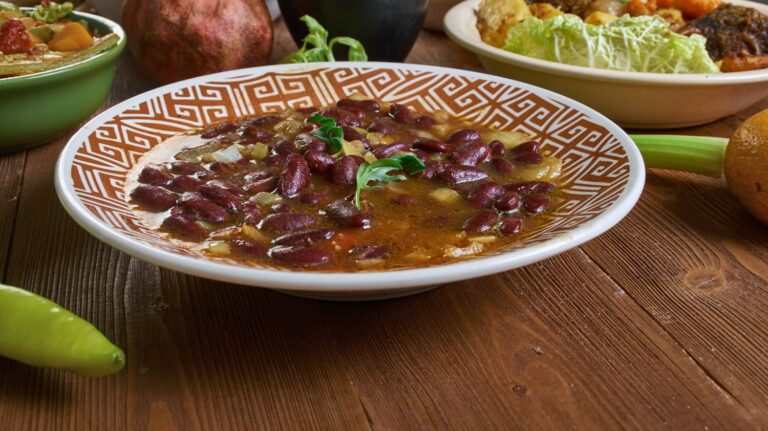Introduction
Chadian cuisine is a blend of different cultures, influenced by neighboring countries like Sudan, Niger, and Cameroon. Meat and dairy are commonly consumed, but there are also vegetarian and vegan options available. In this article, we will explore the traditional cuisine of Chad and the plant-based options that are available for those who choose to follow a vegetarian or vegan diet.
Traditional Chadian Cuisine
Chadian cuisine is characterized by its simplicity and the use of local ingredients. The most common dishes in Chad are millet porridge, rice and beans, and peanut sauce. Meat is also a staple in Chadian cuisine, with chicken, beef, and goat being the most commonly consumed. The meat is usually cooked in a spicy sauce and served with a side of rice or millet porridge.
Common Ingredients Used
The ingredients used in Chadian cuisine are mostly grown locally. Millet, sorghum, and rice are the main grains, while vegetables like okra, eggplant, and tomatoes are also commonly used. Peanuts are a staple ingredient in Chadian cuisine, used to make sauces and stews. Meat and dairy products are also commonly consumed, but there are plant-based options available for those who follow a vegetarian or vegan diet.
Vegetarian and Vegan Options
Vegetarian and vegan options are limited in Chadian cuisine, but they do exist. Vegetable stews and sauces are a good option for vegetarians, while vegans can opt for peanut sauce or tomato sauce with rice. Another option is to order a plate of vegetables with rice or millet porridge. It is important to note that the sauces may contain meat or dairy products, so it is best to ask the server before ordering.
Plant-Based Protein Sources
Plant-based protein sources in Chadian cuisine include peanuts, beans, and lentils. Peanuts are a staple ingredient in Chadian cuisine and are often used to make sauces and stews. Beans and lentils are also commonly consumed and can be used to make vegetarian stews or served as a side dish.
Vegan Recipes to Try
Here are two vegan recipes that you can try at home:
- Peanut Sauce: In a pot, combine 1 cup of peanut butter, 1 cup of water, 1 diced onion, 2 cloves of minced garlic, and salt to taste. Bring to a boil and then simmer for 10 minutes, stirring occasionally.
- Vegetable Stew: In a pot, sauté 1 diced onion and 2 cloves of minced garlic in oil until softened. Add 2 diced tomatoes, 1 diced eggplant, and 1 diced bell pepper. Season with salt, pepper, and any other spices you like (such as cumin or paprika). Add enough water to cover the vegetables and simmer until the vegetables are tender.
Vegetarian Restaurants in Chad
Vegetarian restaurants in Chad are scarce, but there are a few options available for those who are looking for plant-based meals. One of these restaurants is La Cabane, which serves vegetarian and vegan dishes made with fresh, locally sourced ingredients.
Conclusion
Chadian cuisine may be meat-heavy, but there are still options available for those who follow a vegetarian or vegan diet. Vegetable stews and sauces, as well as plant-based protein sources like peanuts, beans, and lentils, can be found on menus in Chad. With a little bit of creativity, it is possible to enjoy the flavors of Chadian cuisine while sticking to a vegetarian or vegan diet.

